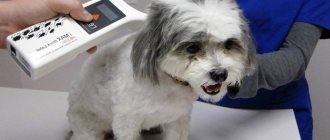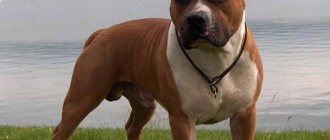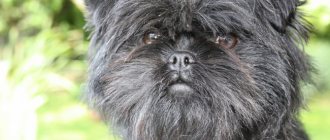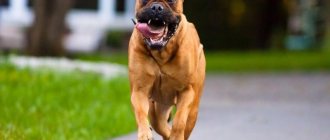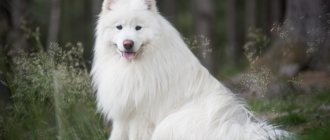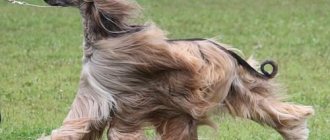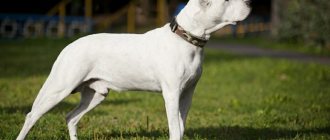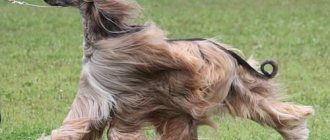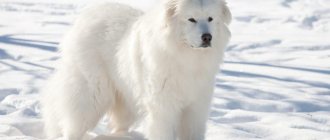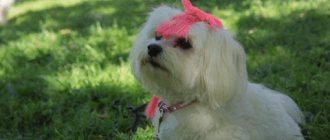Very often, when choosing a pet, city residents consider small breeds of dogs. And no wonder: miniature four-legged animals are easier to keep in an apartment - there is no need for a large space. With such pets, long intensive walks and activities are not needed, as with representatives of large varieties. However, small dogs have their own characteristics - we will tell you about them.
Pros and cons of small dog breeds
From the point of view of breeders, such pets, like any other pets, have their advantages and disadvantages. First, let's note all the advantages
choosing a small dog as a pet.
- Such a pet does not need a large apartment or house - there is no need for a large space.
- Walks with small four-legged pets should not be very long, and exercises should not be long and intense (compared to large varieties).
- The smaller the pet, the less food it needs to satisfy itself, which means the cost of feeding is reduced.
- Dogs of small breeds do not pose a real threat to their owners and others, even if their instincts kick in - they are not difficult to deal with.
- Miniature animals are easier to move around - they can often be held in your arms or placed on your lap - no additional space is required.
- According to statistics, the life span of small dogs is longer than that of their large relatives. Moreover, they remain active longer, which is also a big plus for the owners.
They can also be cute, funny, amusingly clumsy... In general, there is no doubt that these animals are very charming! We have collected for you a large selection of small dog breeds with photos, names and descriptions so that everyone can choose a pet to their liking.
Before considering the varieties, let's note the disadvantages
compact dogs - it is also important to know them in order to make an informed choice.
- Miniature breed dogs are more likely to be injured when playing, falling or being hit because they have very fragile bodies.
- Unlike large dogs, small dogs do not need heavy physical activity, but they are considered “wind-up batteries” that do not get bored of running, jumping and playing. For owners, this can be debilitating.
- Often small dogs are more whimsical and need constant careful care, which also causes more trouble for the breeder.
The cleverest
The smartest animals are those with good working qualities, high learning ability and the ability to make independent decisions. They are easy to train, so even a novice dog breeder can handle their training.
Poodle
Thanks to their extraordinary intelligence and artistic abilities, poodles take 2nd place among the smartest dogs. Regardless of size, these dogs are famous for their friendliness and complete lack of aggression.
Poodles are unpretentious and long-lived. In the absence of chronic pathologies, their life expectancy is 15 years.
German Shepherd
One of the most popular four-legged animals takes 3rd place. German Shepherds are very energetic animals, so when kept in apartments they need frequent walks and intense physical activity.
If you follow all the rules, even a child can handle training a shepherd puppy. Representatives of this breed do not show stubbornness and unquestioningly recognize the authority of their owners.
Papillon
Papillons are in an honorable 8th place on the list of smart cats. These little extroverts perform well in agility, so it is recommended to direct their training towards sports.
Due to the lack of undercoat, Papillons shed very modestly. Representatives of this breed are bathed only when dirty and are always dried with a hairdryer. Otherwise, their fur curls, making combing difficult.
Who is suitable for miniature dog breeds?
Small dog breeds are suitable for different types of breeders. If we talk about place of residence, then most often the owners of such pets are residents of apartments, especially those of a small area. Although small four-legged animals can be kept in a private home, the main thing is that the conditions are suitable.
As for the age of the owners, the miniature tailed friend will be an excellent companion for lonely people - they simply will have no time to be bored and sad. Such a pet is also quite suitable for married couples, but not always for families with children. We must take into account the fact that representatives of small breeds are very susceptible to injury. Therefore, families with small children are not recommended to have such dogs, or they need to be very attentive and careful. Ideally, children of owners of small dogs should be old enough to understand how to behave with an animal.
In the case of older people, the situation is also twofold. On the one hand, a miniature pet can become a real joy for older people - a creature to whom they will rejoice and give their care. A small breed dog often becomes a wonderful companion for retirees. However, there is another side to the coin - little four-legged friends can be very lively and require constant attention. Elderly people do not always have enough strength for such an active and mischievous pet.
Therefore, before getting a representative of small breeds, the future breeder needs to weigh all the pros and cons, thoroughly familiarize himself with the features of the chosen variety and understand whether he can provide the dog with comfort, safety and the necessary attention.
Those that get along easily with children and other pets
Good-natured companion dogs are suitable for apartments. Such pets quickly find a common language with other four-legged animals and are happy to babysit children.
Labrador
Friendly Labradors are constantly trying to please people. Thanks to their gentle disposition, they get along well with cats and children of any age.
Extra effort is not required when caring for a Labrador. Only strict diet control deserves special attention. These four-legged animals love to eat and often suffer from obesity.
Golden retriever
Retrievers are family dogs that get along well with children and other animals. In psychotherapy, these animals are used to treat prolonged depression.
The main problem of the retriever is excessive shedding. Even regular combing of the fur and a powerful vacuum cleaner cannot cope with it. For this reason, it is worth coming to terms with this shortcoming, since the good nature and boundless love of this dog is overwhelming.
Sheltie
Shelties are known as the most responsible babysitters and loyal friends. They love to play and communicate, so they have great difficulty surviving hours of loneliness. If it is not possible to work from home, the owner will have to find a replacement. Another four-legged dog can become a playmate for the Sheltie.
Representatives of this breed practically do not smell like dogs. A slight “aroma” appears only when exposed to rain.
The best small dog breeds for home and apartment
Among a fairly large number of small-sized dogs, there are breeds whose representatives adapt better than others to living in an urban environment, small apartments and houses and become wonderful companions for city residents. Here are ten such examples.
Pekingese
One of the most ancient breeds, representatives of which lived under the Chinese emperors and were held in high esteem. You don’t need to run with them, just take a quiet walk for a short time. Ideal for apartment dwellers: if you train a Pekingese to use a litter tray, then early walks are not needed. But they need daily combing of their long coat, otherwise their gorgeous appearance will spoil.
Yorkshire Terrier
One of the most common breeds that are great for keeping at home. Ideal for apartments - they are almost not subject to shedding, which means there will be no hair everywhere. Another plus for allergy sufferers. At the same time, Yorkies are very cheerful, sociable and extremely fond of their owners.
Welsh Corgi Pembroke
An excellent companion, suitable for home and apartment. The Pembroke Welsh Corgi is friendly and unpretentious. No haircut or special clothing is needed. They do not damage furniture and household items, so you can rest assured about your home interior. Another plus is unobtrusiveness, which means the owner can calmly go about his business. The only thing is that corgis really love to eat.
Pomeranian Spitz
This little dog loves cleanliness and washes himself with his paws like a cat. He likes to take long walks and is not averse to meeting new people. Pomeranians have very sensitive hearing and communicate danger by barking. In order not to disturb the neighbors, you need to carefully train him - he easily lends himself to this. Not recommended for families with children.
Bichon Frize
These small pet dogs are great for couples with children, even very young ones. The French lapdog is very friendly and actually never shows aggression. Learns to go to the litter box. One of the best options for city residents. Requires care for thick coat.
French Bulldog
A small dog with an elastic build, it is very popular among breeders in urban environments. The calm French Bulldog does not need very active and long walks, so these dogs are great for older people. Particular attention should be paid to your pet in winter: due to poor tolerance of low temperatures, you should buy him a warm overall. In summer you should avoid walking in the heat.
Pug
An excellent choice for apartment dwellers. The pug does not need long walks; he learns to go to the litter box. A balanced dog, he obeys his owners and is easy to train. All you have to do is brush it regularly and, to keep it from getting fat, watch its diet.
The laziest
Workaholics who love dogs should not refuse to buy them because they are busy. It is enough to choose your favorite among those who walk little and do not need intense physical activity.
Basset Hound
Because of their love for comfort, the British call Basset hounds “couch athletes.” These long-eared short-legged creatures are very cunning. If the owner forbids them to sleep on the bed, then they will still climb there, waiting for the two-legged overseer to go to work.
Caring for basset hounds is quite problematic. They often drool and get their lunch all over their faces. Due to the abundance of folds, male dogs do not always smell pleasant, so they are washed with tar shampoo, avoiding water getting into the giant hanging ears.
English bulldog
Representatives of this breed have to be literally forced to go outside, because otherwise they will simply lie on the sofa. Because of their short muzzle, Bulldogs often snore in their sleep and make loud gurgling noises.
When caring for a bulldog, special attention is paid to the folds on its face. Dirt and moisture quickly accumulate in them, forming pathogenic microflora. Lack of regular care can lead to dermatitis and infections.
Pug
Friendly Pugs make wonderful companions. The peak of activity in these dogs is observed in childhood. After a year, it practically disappears, so instead of active games and walks, pugs prefer a quiet holiday next to their beloved owner.
During the shedding period, pugs' fur must be combed every day, and the rest of the time - once a week. Due to their short fur, representatives of this breed do not tolerate cold weather well, and due to their shortened nasal passages, they do not tolerate high temperatures. In winter they are walked in warm overalls, and in summer they are kept in a room with powerful air conditioning.
Bull type terriers
Crosses of bulldogs and terriers were bred in Great Britain throughout the 17th and 18th centuries specifically for baiting animals - the national pastime of the British. Outwardly inconspicuous bull and terriers have absorbed the best fighting qualities. Hunting terriers have inherited agility, speed, passion, and flexibility. From bulldogs they adopted tenacity, a “death grip”, and immunity to pain.
Four breeds became direct descendants of bull and terriers. Aggression is regarded as a serious defect; evil individuals are simply excluded from breeding.
English bull terrier
English bull terriers mini and standard.
In addition to fighting bulldogs, the now lost white English terriers and Dalmatians took part in the selection. Initially, only white bull terriers were recognized. In the 20th century, colored individuals were introduced into breeding.
The breed includes a miniature group of dogs. The height of a standard bull terrier is up to 51 cm, a mini one is up to 35.5 cm.
English Staffordshire Bull Terrier
The smallest representative of the bull type terrier. Height at the withers is 35 - 40 cm. Education and selective selection have turned fighting dogs into lovely home companions.
American Staffordshire Terrier or Amstaff
The first name of the breed is pit bull terrier, from the word “pit” - pit for baiting. In 1936, a separate AKC standard was drawn up for Amstaffs and recognized as an independent breed.
Amstaffs are larger than their English relatives, height at the withers is 43 – 48 cm.
The first registered representative of the breed was the American Staffordshire Terrier named Pete. In the 30s, he starred in gangster comedies and was considered a real star.
Initially, the Amstaffs' element was dog fighting. Now they are companions and show dogs. Owners call their pets good-natured hulks at home and brave defenders on the street.
American Pit Bull Terrier
Pit bull terriers are similar in appearance to Amstaffs, but are more diverse. The breed includes bulldog and terrier type dogs.
American Pit Bull Terriers are banned in many countries around the world. Scary stories are told about the unpredictability and viciousness of dogs. However, many owners emphasize the restraint and good nature of their pets and insist that the character of dogs depends on their upbringing.
The height of pit bulls is from 40 to 60 cm, but there are real giants. The world's largest pit bull terrier, Hulk, weighs 80 kg.
The breed is recognized by the only cynological organization - UKC. The founder and president of the club, Chauncey Bennett, registered his own pit bull terrier under No. 1 in 1898.
Komondor (weight – 50-60 kg, height – 70-80 cm)
This dog is also known as the Hungarian Shepherd. Among all other large breeds, the Commander stands out due to its appearance - it is a real wolf in sheep's clothing. The peaceful appearance with long, corded fur is combined with the strength of a shepherd and powerful jaws. Thanks to the unusual cover, the dog is both protected from overheating and camouflaged among the sheep. Dog handlers believe that such an unusual coat is an inheritance from their ancestors, shaggy shepherd dogs. But the Hungarians like the legend about the appearance of the Komondor as a result of the connection between a wolf and a sheep.
Strong immunity allows dogs to adapt to any weather conditions. A calm nature helps you interact with people. Today, Komondors, as before, herd flocks of sheep and serve as watchmen.
♥ ON TOPIC: Why don’t people breed bumblebees for honey, because they also collect it?
How puppies grow: description of important stages of development
First, let's figure out how puppies grow by month. It can be divided into 4 stages of development.
From birth to 2.5 months
The first stage is the most important. On it, babies gain strength and are completely dependent on their mother. Together with breast milk, they receive passive immunity from it - the main protection against external infections.
All newborns are deprived of hearing and vision. These feelings appear during the first 2 weeks, but the maximum available acuity and clarity develop only at 4-8 weeks. Before this, puppies are guided only by smells and tactile sensations, so they easily find their mother’s nipples.
In addition to the senses, the first teeth also appear by 4 weeks. At this point, small pets are introduced to complementary foods - the first adult food, consisting of ground natural products, ready-made meat pates or soaked dry food.
Soon after opening their eyes, babies begin to make their first attempts to stand on their paws, and by about 4 weeks they are already walking and even running quite confidently. Despite this, they still cannot be taken outside.
REFERENCE!
By the end of the first stage, the four-legged pet grows approximately 2 times.
From 2.5 months to six months
By this stage, puppies have erupted the entire deciduous row, including 12 incisors, 4 canines and 12 premolars. They are completely transferred to independent feeding and weaned from their mother, passing them into the hands of new owners.
At 3 months, baby teeth begin to gradually change into molars. Up to six months, the incisors and canines are fully formed. Premolars and molars are usually delayed. The time of their appearance depends on the breed of the animal.
At 2.5 months, four-legged pets are given a comprehensive vaccination against the most common infections: distemper, enteritis, parainfluenza, leptospirosis and infectious hepatitis. After 21-28 days, they are revaccinated, that is, they are vaccinated with the second component of the previously used vaccine to consolidate the result and increase the number of antibodies.
The rabies vaccination is given at the latest - at 3-4 months, but without revaccination. It is recommended to walk your pet only on the 4th day after revaccination. In this case, the likelihood of infection from other animals is minimal.
REFERENCE!
By six months, the pet’s weight increases 3 times, and its height at the withers increases 2 times. Body proportions are also finalized, so at this stage special attention should be paid to a balanced diet.
From six months to a year
By six months, the formation of tubular, or long bones, ends. They grow due to lengthening of the body and are found in the front and hind limbs. Immediately behind them, flat bones are formed, that is, the ribs, pelvis, shoulder blades and cranial vault, necessary to protect the internal organs. At this point, the pet’s body begins to increase in width.
At approximately 6-8 months, animals reach sexual maturity. Girls go into heat for the first time, and boys begin to show interest in the opposite sex. Due to the riot of hormones, character changes. Four-legged teenagers become stubborn and disobedient, so it is recommended to master all basic commands before six months.
After a year
Despite the fact that all the interesting things happen before the age of one, a one-year-old pet is still growing. He continues to gain muscle mass, and his skeleton is fully formed by about 3 years of age.
Alabai (weight – 50-80 kg, height – 70-75 cm)
The Alabai, or Central Asian Shepherd Dog, has been serving man since very ancient times. Thus, in Turkmenistan, archaeologists found terracotta figurines of the 2nd-4th centuries, which are dedicated to large, broad-chested dogs with an impressive head. For centuries, these shepherds have protected their owners, guarded houses and herded herds. It is only outwardly that Alabai seem slow - they have a quick reaction and a difficult, stern disposition.
Alabais are also known as Turkmen wolfhounds. Today the breed is considered a symbol of this country. And in November 2022, a 15-meter gilded monument to Alabai was even erected in Ashgabat. The largest representative of the breed lives today in Russia. A shepherd named Bulldozer weighs 125 kg and eats 5 kg of meat and 10 liters of porridge per day.
♥ ON TOPIC: Why do cats love to sit/lie down in small spaces (boxes, bags, etc.).
Terriers
Terriers were bred to hunt in burrows and catch rodents, which affected their temperament. Despite all their diversity, they share common features. These are restless, hardy, stubborn, passionate, brave dogs. Of the more than 30 types of terriers, there are 5 breeds that fit the definition of “medium smooth-haired”.
Parson Russell Terrier
The closest relative of the Jack Russell Terrier. Both breeds were bred by the English priest and passionate hunter John Russell in the 19th century. In 2001, they were separated and separate standards were published.
The ideal height for female Parson Russell Terriers is 33 cm, for males 36 cm.
Dense, thick wool comes in two types: smooth and hard, shaggy. Colors – solid white or with colored spots.
Hunters value Parson Russell Terriers for their speed of reaction, endurance, and tirelessness in work. Domestic dogs need regular walks and exercise. Parson Russells rarely get sick and live an average of 15 years.
Manchester Terrier
The oldest officially recognized breed from Great Britain.
Manchester Terriers were bred at the turn of the 18th – 19th centuries specifically for rodent extermination tournaments. The fast, agile dog could destroy a hundred rats in 6 minutes.
Now the Manchester Terrier is a loyal, friendly house companion. The ideal height for girls is 38 cm, for boys 41 cm. The only color is blue-black with rich tan. Manchester Terriers became the ancestors of English Toy Terriers.
Smooth Fox Terrier
A strong, agile dog originally from Great Britain. The maximum height of fox terriers is 39 cm, weight – up to 8 kg. The smooth short coat is colored solid white or with colored inclusions. The literal translation of the name of the breed is “fox terrier”.
Fox Terriers have retained their working skills. Temperamental dogs are bred for hunting and as domestic companions. Smooth Fox Terriers became the ancestors of the American Toy Terriers.
A famous representative of the breed was Admiral Baird's fox terrier Igloo. The dog accompanied the owner on an expedition to Antarctica. He became famous as the only dog to survive in such extreme natural conditions.
Rat Terrier
American Pied Terriers, registered in the USA but not recognized by the FCI. The height of standard rat terriers is 33 – 46 cm, but the breed includes mini dogs with a height of 25 cm.
Rat terriers are bred not only for home keeping. In the USA, they work in hospices and nursing homes as psychotherapy dogs. They serve as sniffers for prohibited items in the police: it takes less than 3 weeks to learn how to search.
In the 70s of the 20th century, based on Rat Terriers, a new hairless breed was developed - the American Hairless Terrier.
Brazilian Terrier
The breed was formed at the beginning of the 20th century and received international recognition in 2007. Height 33 – 40 cm. Color white with brown, black, blue spots.
Energetic, cheerful Brazilian terriers are famous as skilled burrow hunters of small animals, vigilant watchmen and faithful companions. The breed is rare, but its popularity is growing.
Moscow Watchdog (weight – 55-65 kg, height – 68-78 cm)
This breed was bred artificially and relatively recently - in the middle of the last century. The Moscow watchdog combines the best features of the St. Bernard, the Caucasian Shepherd and the Russian pinto hound: the monumental appearance and strength of mountain rescuers, the ferocity and unpretentiousness of Caucasian shepherds, but at the same time the mobility and perseverance of the hounds. The breed turned out to be stronger, more resilient and muscular than its main prototypes.
Moscow watchdogs are balanced, but at the same time fearless dogs. They are excellent watchmen and bodyguards. Experts give this breed second place in terms of protective qualities after the Caucasian Shepherd Dog.
♥ BY TOPIC: What is horsepower and how many horsepower is in one horse?
English Mastiff (weight – 68-100 kg, height – 69-91 cm)
Our list opens with the English Mastiff, a gentle giant. This dog is considered to be the largest in the world. The weight of the animal often exceeds 100 kg, and its height is close to a meter. It was the English mastiff that was included in the Guinness Book of Records. The name of the record-breaking dog is Aikama Zorba. This animal weighed 155 kg and its height reached 94 cm.
The ancestors of mastiffs are considered to be the fighting dogs of the British Celts. These animals performed military service back in the 1st century BC. The Romans knew the capabilities of fighting dogs. Thus, the historian Faliscus wrote that the “Britons” are superior to all other known breeds in their strength and ferocity. And the name “mastiff” came precisely from Ancient Rome. The word is believed to be a corruption of the Latin massivius (“massive” or “large”). But mastiffs have long lost their aggression - today they are extremely peaceful animals, devoted to their owner and home.
♥ ON THE TOPIC: Dolphins are not fish and other interesting facts about these cetaceans.
How to find out your pet's future size
If you become the owner of a mongrel, but know nothing at all about its parents, then you can try to calculate the approximate future size. To do this, you need to multiply the weight of a 4-month-old puppy by 2 or divide the current weight by the age in weeks and multiply by 52. Both methods do not guarantee 100% accuracy, but at least you will get approximate values.
IMPORTANT!
If a four-legged baby found on the street was severely emaciated, then until normal muscle mass is gained, its weight cannot be taken as a guide for calculations.
Many dog lovers often recommend another method - determining future sizes by the size of the paws. There is no point in following them. After all, a puppy’s large paws do not mean that he will become a giant. With a much higher probability, this external sign is explained by uneven development of the body in the first 4 weeks of life.
